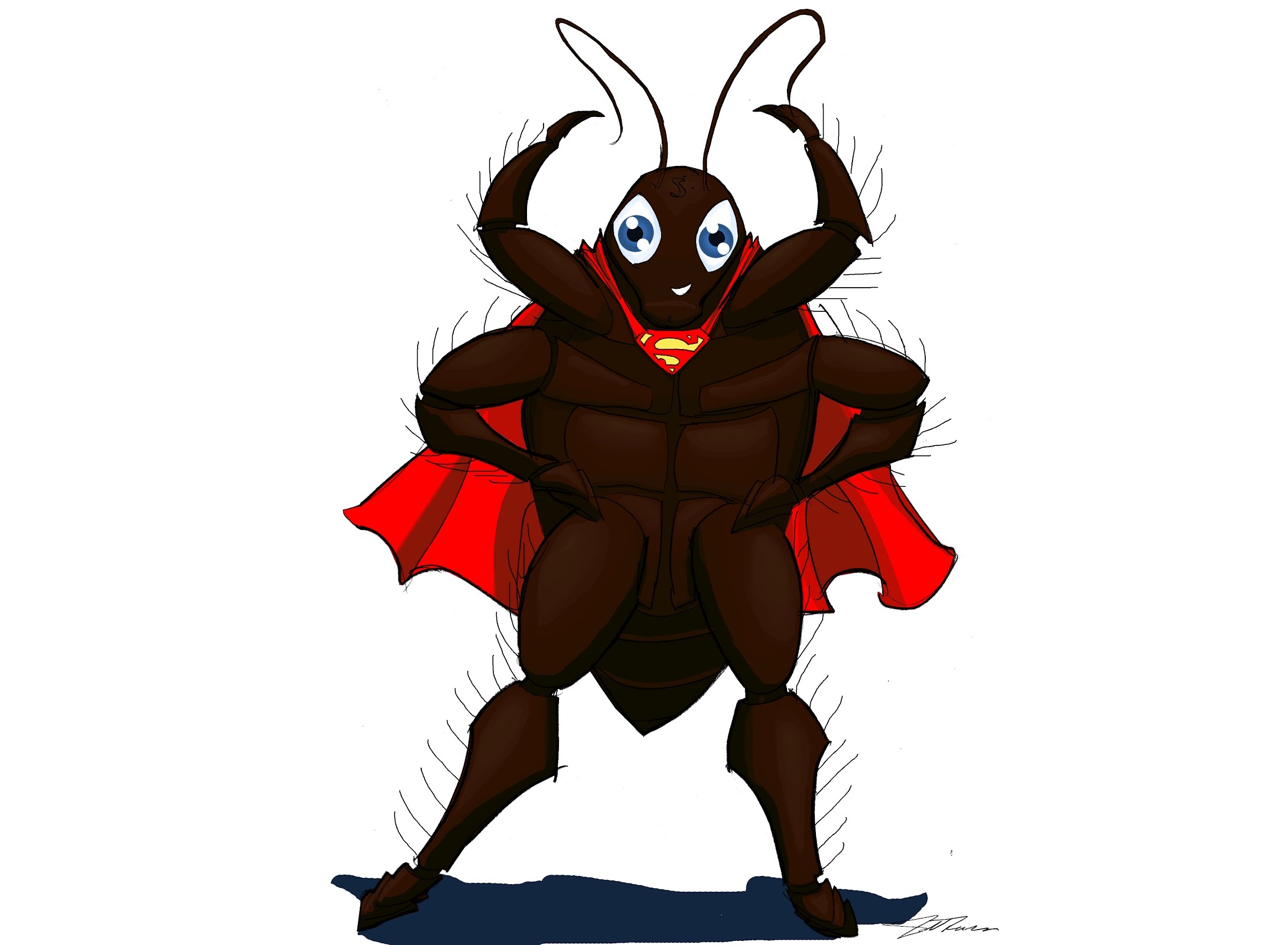

Cockroach Caca Contains Chemical Messages Made by Microbes
蟑螂便便为信
撰文/播音 克里斯托弗·因塔利亚塔(Christopher Intagliata)
翻译 M
审校 惠丹丹
Roaches get the signal to gather together from pheromones produced by their gut microbes and released in the insects’ excrement.
蟑螂群聚而居是因为接收到由肠胃微生物产生,并通过粪便释放的信息素信号。
Microbes play a huge role in our nutrition, our immunity, maybe even our mental health. But we aren’t the only ones that rely on these armies of resident bacteria. "Baby cockroaches, the ones that just emerge from the egg, don't have any gut bacteria." Coby Schal, an entomologist and chemical ecologist at North Carolina State University. "The first thing they do is take a nice feces meal: basically, eating the poop of their brothers and sisters and mothers and fathers."
微生物在我们的营养、免疫方面扮演着重要的角色,也许,在心理健康方面也是如此。然而,并非只有人类在依赖这些居住在体内的细菌大军。“刚孵化出来的蟑螂宝宝,它们的肠胃里没有细菌。” 北卡罗莱纳州立大学的昆虫与化学生态学家,科比·舍尔如是说。“它们出生后做的第一件事就是吃一顿便便大餐:主要是吃它们的父母与兄弟姐妹的便便。”
【广告片段——F:呃…恶心的蟑螂。M:不要怕。】
Excrement inoculates the roaches with beneficial gut bugs, Schal says. And it's also a longevity-boosting nutritional supplement. But the weirdest thing is, the poop actually calls the tots to come hither. Because it's laced with compounds, like fatty acids, that attract roaches of all ages. The substances are called aggregation pheromones. So poop essentially serves as a rallying call to congregate—and feast.
舍尔说,通过吃粪便,有益的肠胃微生物被接种到蟑螂体内。同时,这些细菌还是延年益寿的营养品。然而最为奇怪的是,这些粪便可以把蟑螂们都勾引过来。因为粪便中含有一些化学物质,如脂肪酸,对所有年龄的蟑螂都有着吸引力。这些物质被称为聚集信息素。因此,粪便本质上充当着集会信号——以及一顿大餐的作用。
To determine where the attractive chemicals come from, Schal and his colleagues raised a group of sterile, microbe-free cockroaches—and then collected their excrement. But as they suspected, the sterile stuff, without any microbial by-products, failed to tantalize other roaches. They then gave the sterile bugs a fecal transplant. "So we took feces of normal cockroaches, and exposed sterile cockroaches to those feces. They very readily eat these feces and they incorporate the microbes, the bacteria from these feces, into their gut. And then these cockroaches then produce the aggregation pheromone again." They published the findings in the Proceedings of the National Academy of Sciences. [Ayako Wada-Katsumata et al, Gut bacteria mediate aggregation in the German cockroach]
为了确认这些信息素的来源,舍尔和他的同僚培育了一组不育且无菌的蟑螂,并收集它们的排泄物。就如他们预料的一样,这些贫瘠的粪便——不含任何微生物的副产物——无法吸引到其他蟑螂。之后,他们为这些无菌的蟑螂“嫁接”了一些粪便。“我们采集了一些普通蟑螂的粪便,并将其置于不育蟑螂的面前。这些不育的蟑螂非常爽快地吃下了这些粪便并将粪便中的微生物、细菌,吸纳到自己的肠胃中。然后这些蟑螂也能够生产聚集信息素。”这项研究发表在《美国科学院论文集》上。
The results suggest gut bacteria may do a lot more than we thought—including, at least for cockroaches, aid communication. That's a plus for us—because we might be able to hijack those compounds to build better baits and traps. To make sure that [Clip from commercial: "Roaches check in… but they don't check out."]
这个结果表明肠胃细菌的作用可能远超我们的想像——至少在蟑螂身上,细菌起到了协助交流的作用。这对我们同样有益——也许我们可以通过“绑架”这些化合物来设计更好的蟑螂诱饵和陷阱,去确保“蟑螂入住”,“而永不离店”。
【广告片段——欢迎啊,蟑螂兄弟。欢迎来到别无分店的黑白蟑螂酒店。这里有秘制的美味,豪华的住宿,刺激的活动…来来来,到屋里来,我们还有好多房间呢…→u→】
 京公网安备11010502039775号
京公网安备11010502039775号